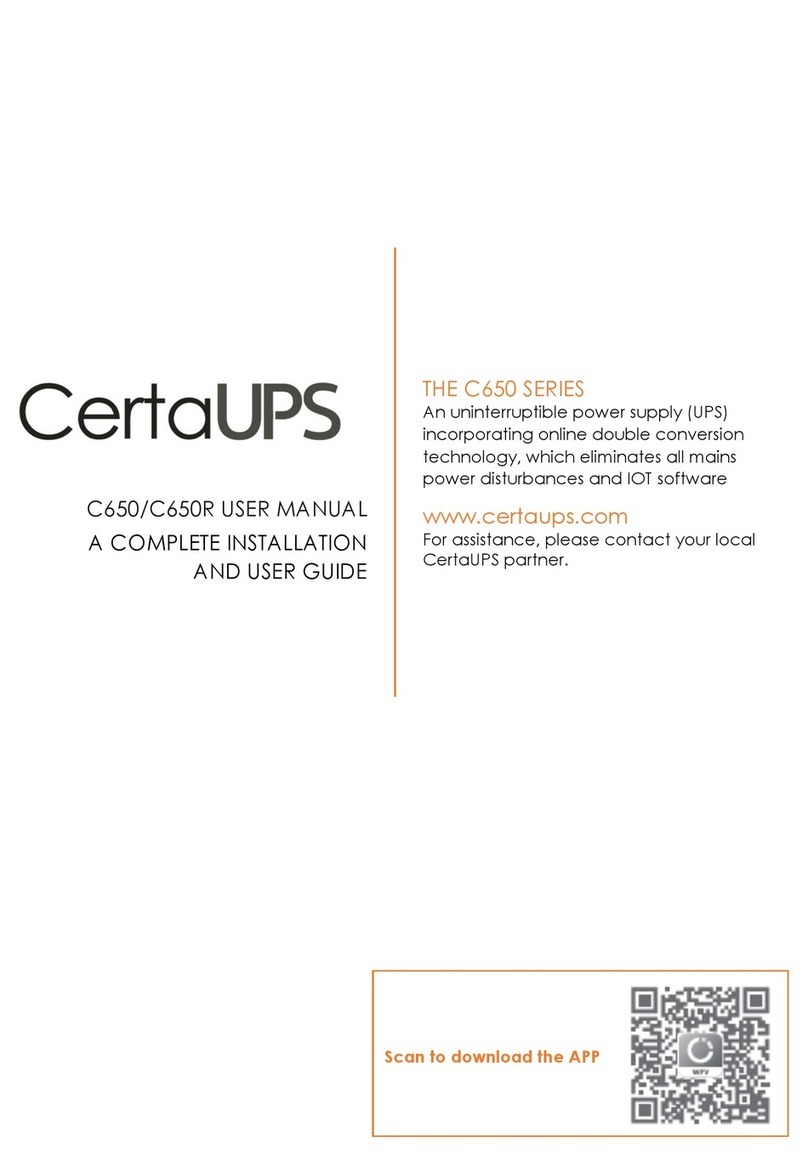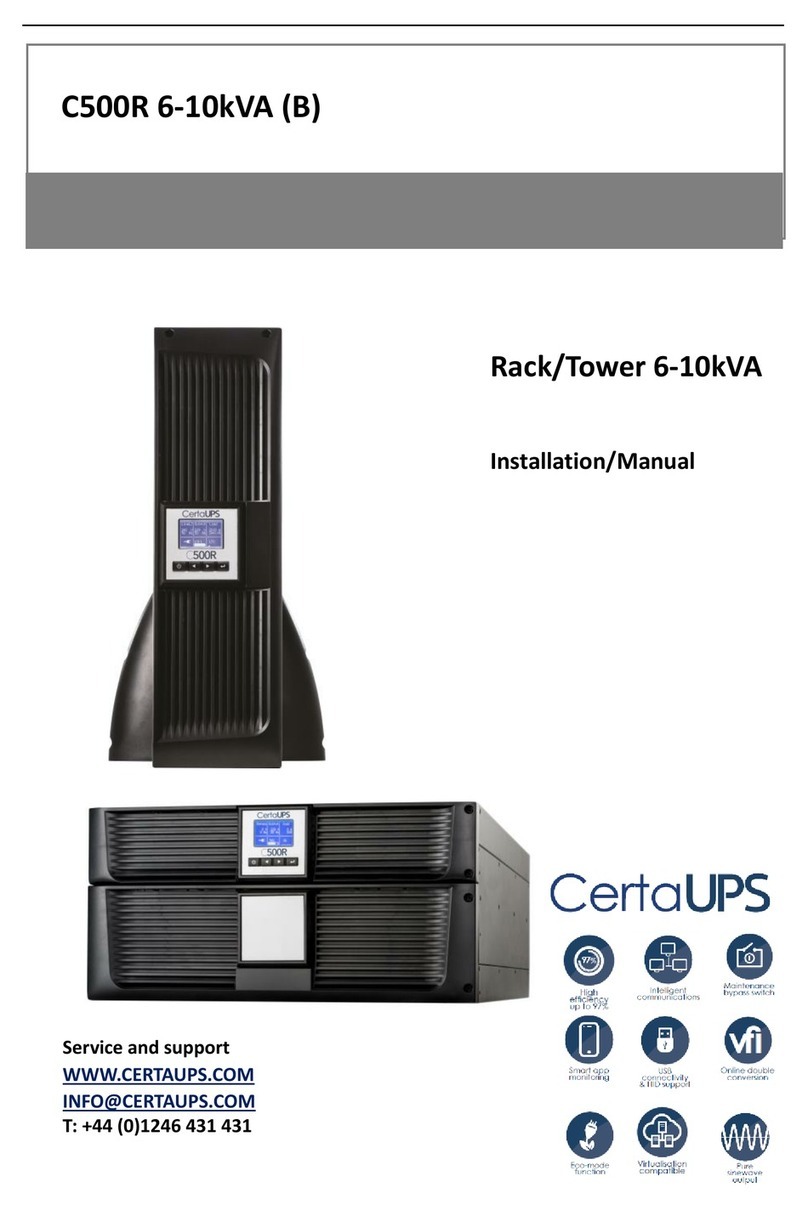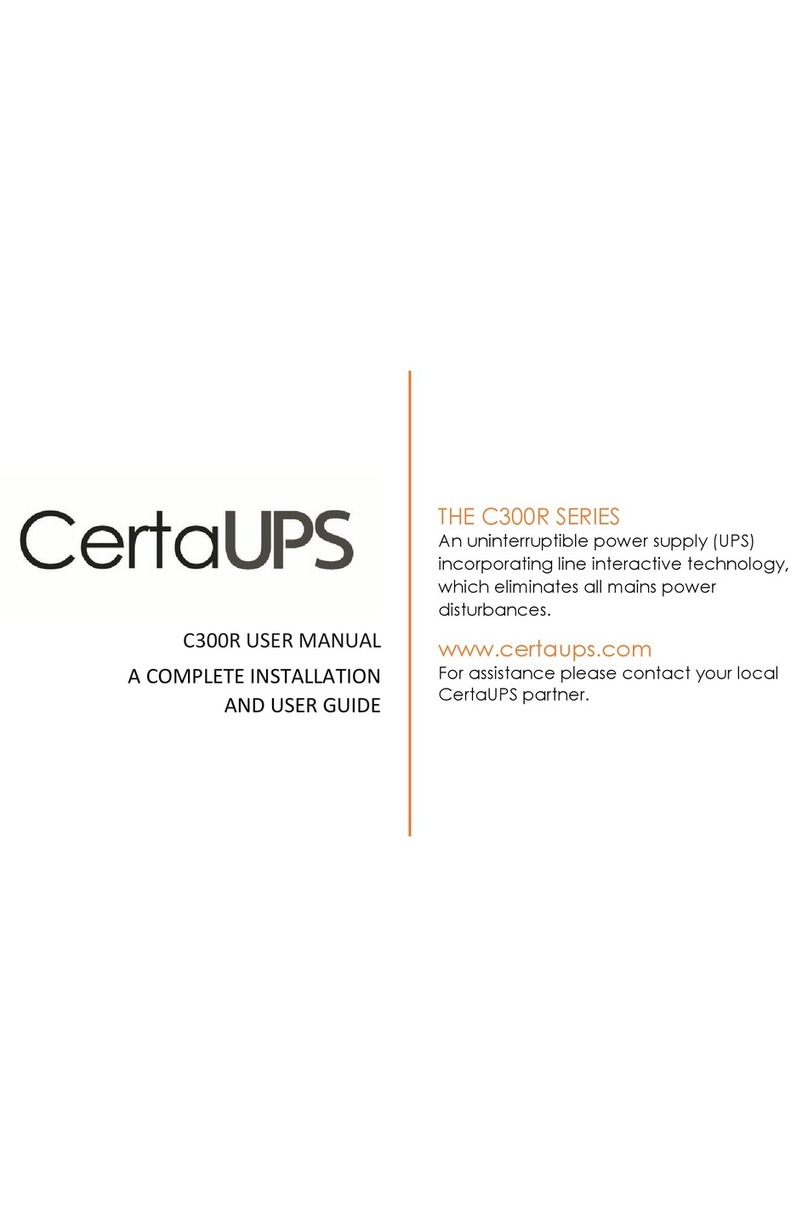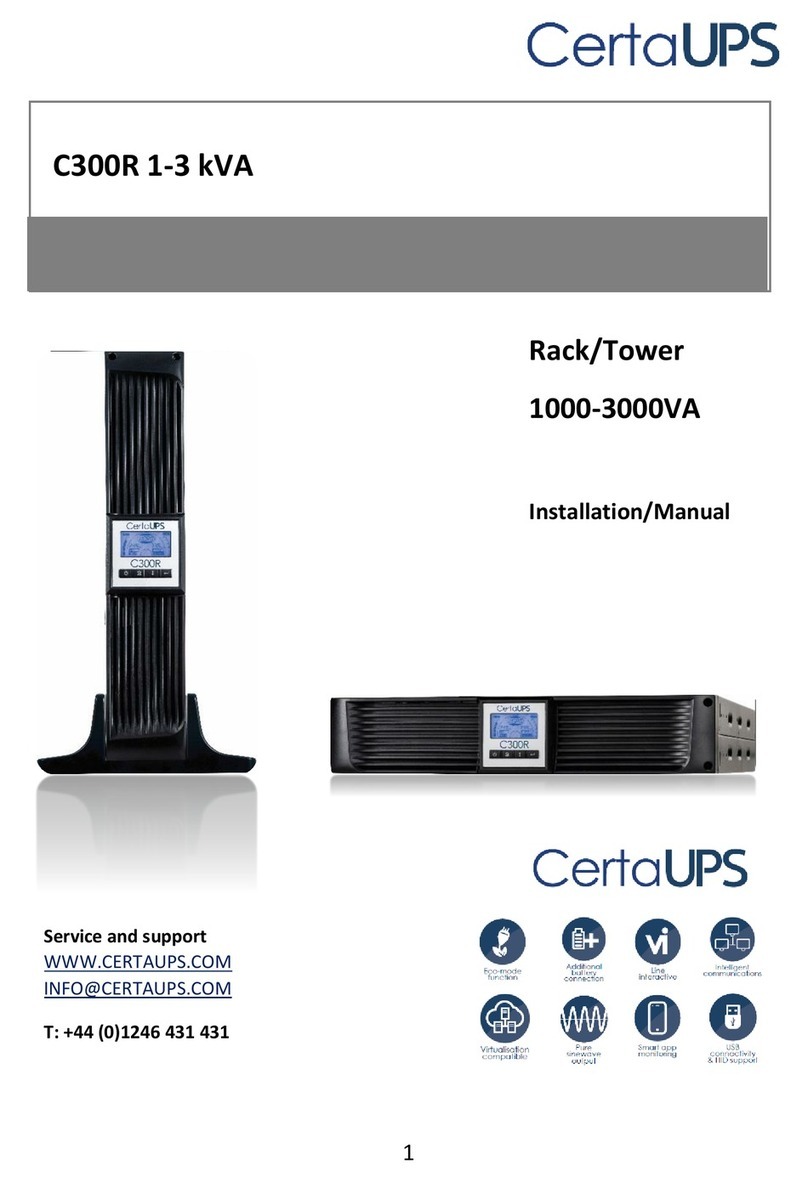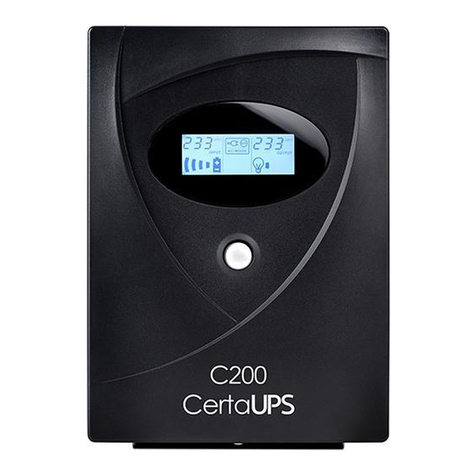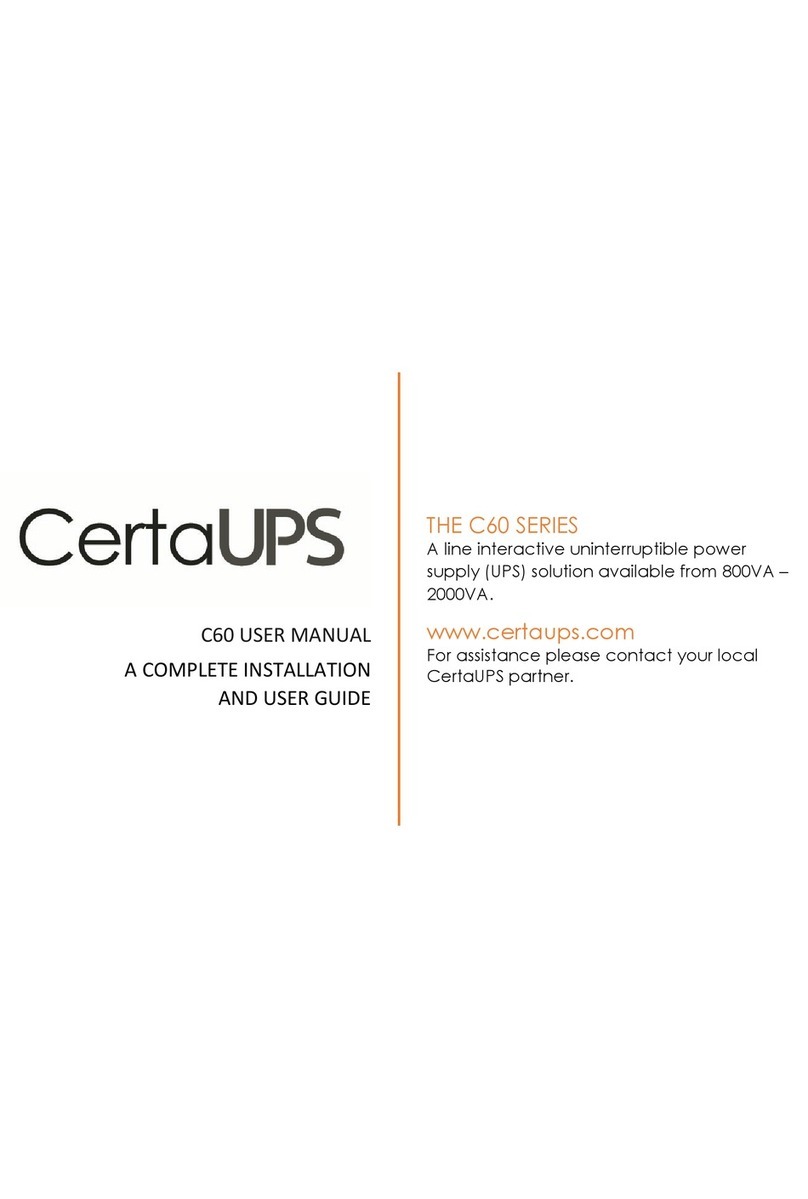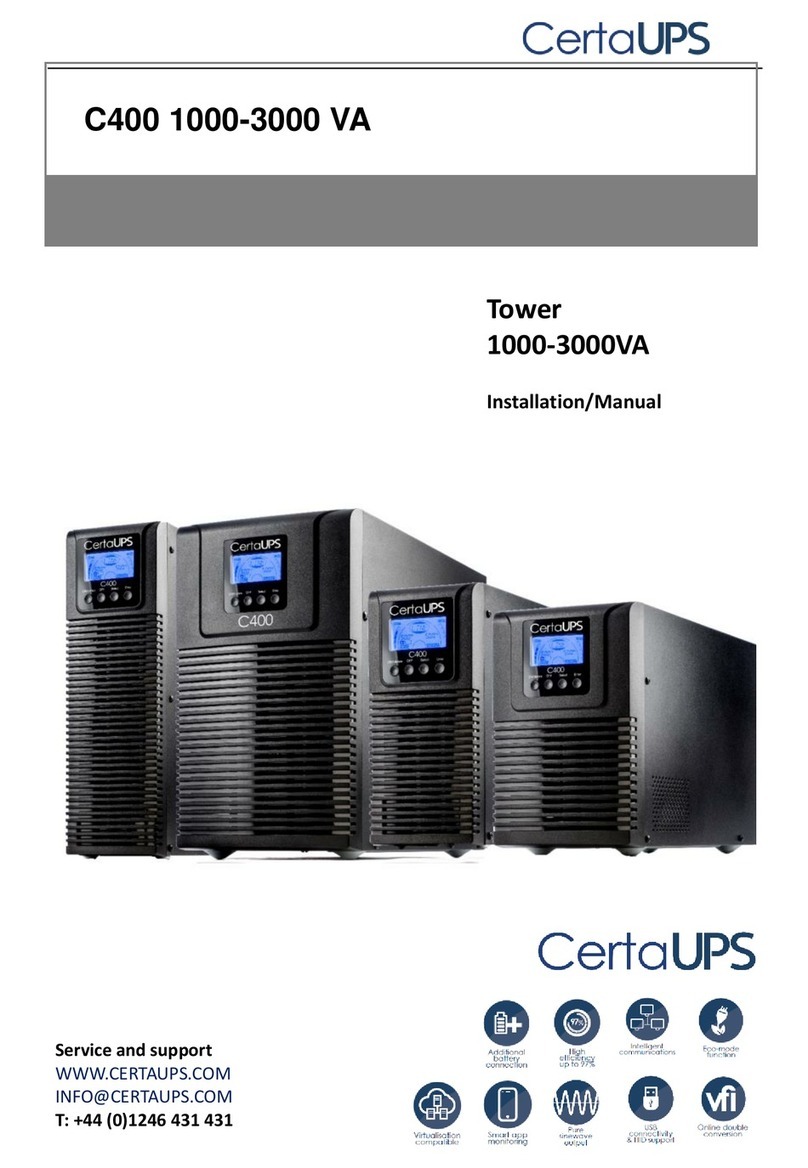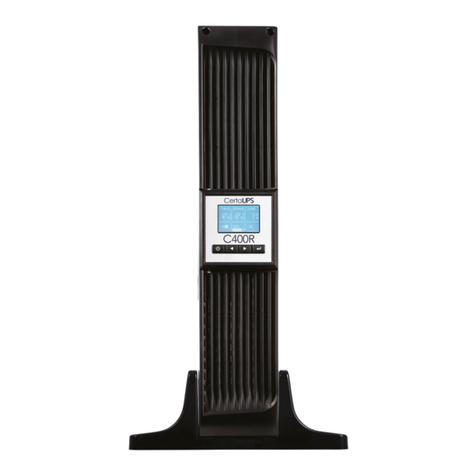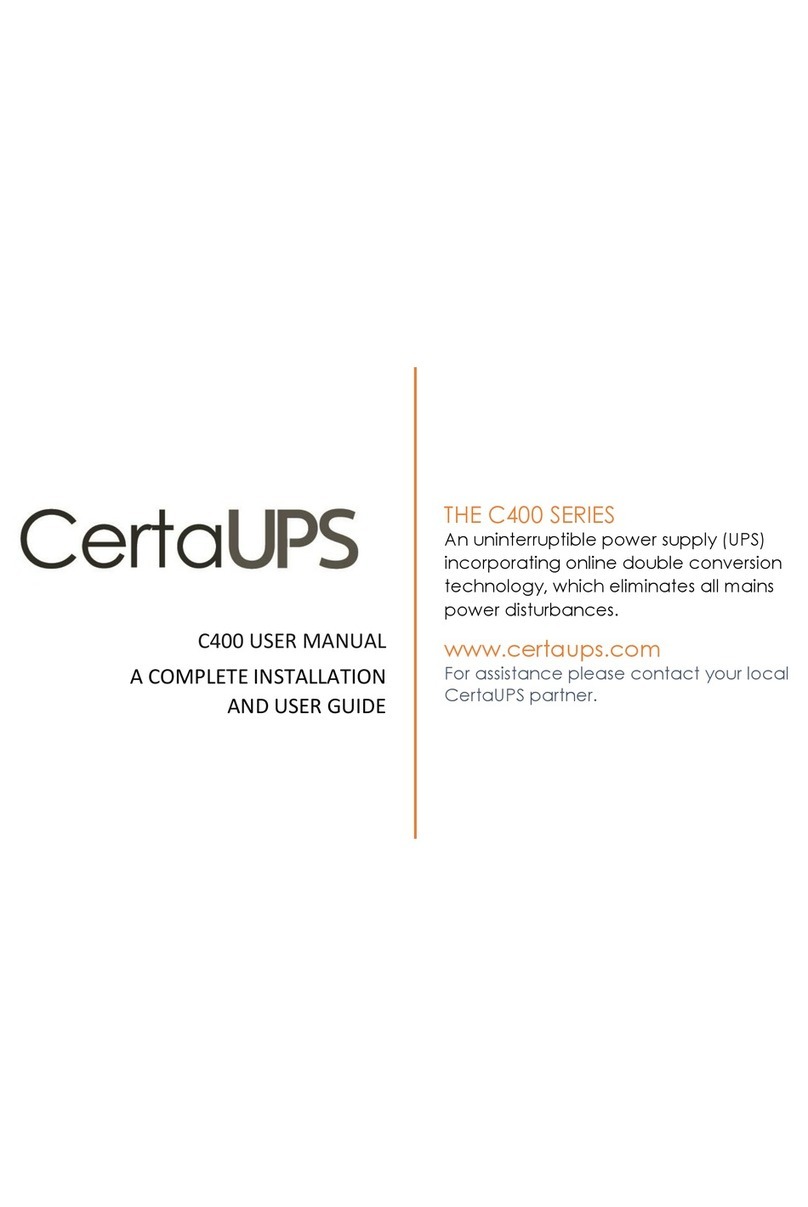1
1. Safety and EMC Instructions
Please carefully read the following user manual and safety
instructions before installing and using the UPS
1.1 Installation
See installation instructions before connecting to the input supply.
Condensation may occur if the UPS is moved directly from a cold to a warm
environment. The UPS must be absolutely dry before being installed. Please allow
an acclimatisation time of at least two hours.
Do not install the UPS near water or in damp environment.
Do not install the UPS where it would be exposed to direct sunlight or near other
heat sources.
Do not connect appliances or items of equipment which would overload the UPS
(e.g. laser printers, etc.) to the UPS output.
Place cables in such a way that no one can step on or trip over them.
Use a reliable earth source.
The external battery source must be earthed.
Only connect the UPS to an earthed shockproof outlet socket.
The building outlet connection must be easily accessible to disconnect from the
UPS.
When installing the UPS check that the sum of the leakage current of the UPS and
the connected load does not exceed 3.5mA.
Do not block ventilation openings in the UPS housing. Ensure the air vents on the
front and rear of the UPS are not blocked. Allow at least 250mm of space on each
side.
When installing the UPS, ensure that the earthing cable is installed between the UPS
and any external battery cabinets.
Appropriate short-circuit backup protection should be provided within the input
wiring installation. Please see the input protection specification in chapter 4.2.
